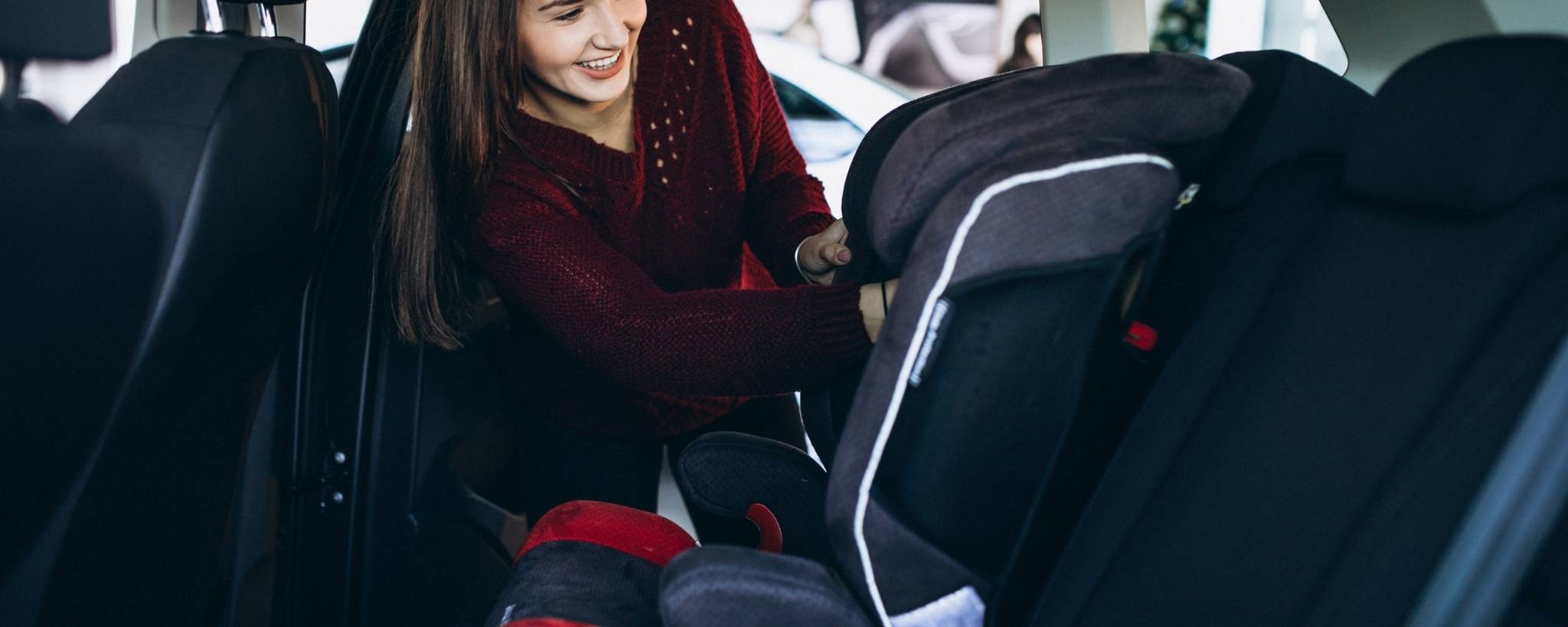The Best Way to Clean an Infant Car Seat
Tired of the mess in your infant's car seat? Here's are some best ways to clean a baby car seat at home!

Written by:
Parham Koukia
Reviewed By:
Editorial Team
Published: April 11, 2025
Updated: October 09, 2025
Use AI to summarize this article:
Research from the University of Birmingham found that car seats and strollers can harbor over 100 bacteria per square centimeter, making them dirtier than the average toilet. YIKES!
And it gets worse if you’re a parent. Dr. Charles Gerba, a professor of environmental microbiology at the University of Arizona, conducted research and found that vehicles with children carry 147% more bacteria than those without. According to Gerba, this spike in contamination is due to unclean baby car seats, and he warns that some of these bacteria are capable of causing strep throat, ear infections, and other illnesses in children.
Spilled formula, crushed snacks, and sticky juice cups seep into the padding, latch onto the harness straps, and build up inside the plastic shell. And while most parents clean the visible mess, very few understand how to safely and effectively sanitize all parts of an infant car seat without damaging it.
That’s where this guide comes in. In this, you’ll learn exactly how to deep-clean your baby’s car seat safely and thoroughly with the right tools.
Step-By-Step Guide: How to Clean Baby Car Seat
Gather Your Cleaning Supplies
Before starting, make sure you have everything on hand. To clean a baby car seat, you’ll need:
- A soft microfiber cloth or hand towel
- Soft-bristle brush or toothbrush
- Baby-safe detergent or unscented castile soap
- Spray bottle with diluted soap
- Paper towels or clean drying cloth
- Optional: A handheld vacuum or small air compressor
Avoid using harsh chemicals, bleach, vinegar, essential oils, or alcohol-based cleaners. These can degrade the harness straps, weaken foam padding, and irritate your baby’s skin.
Step 1: Read the Manufacturer’s Manual
Refer to the car seat’s manual before attempting to clean it. Generally, the car manual outlines which components are removable, which can be machine-washed, and which should only be hand cleaned. Some seats even warn against submerging buckles or straps.
Step 2: Remove Loose Debris
Detach the car seat from the car and shake it gently upside down to release trapped crumbs. Use a vacuum cleaner to remove debris from seams, fabric folds, and beneath the harness. This prevents wet crumbs from turning into a soggy mess later.
Step 3: Clean the Fabric Cover
If machine washable, place the fabric cover in a gentle cycle using cold or lukewarm water. Do not use the dryer, as heat can shrink the fabric or weaken its elasticity.
For non-removable covers, use a spray bottle with diluted baby-safe soap, a soft brush, and a damp cloth to lift stains.
Step 4: Wipe the Straps and Buckles
DO NOT ever try to soak or machine-wash harness straps!
The harness straps are designed to absorb crash forces, but excessive moisture can reduce their strength. Instead, wipe it with a cloth dampened with baby-safe soap and warm water. For buckles, submerge just the buckle (not the straps) in clean water and shake to remove internal debris.
Step 5: Clean the Plastic Shell
Use a damp cloth and mild detergent to clean the plastic or metal base. Avoid soaking seams or crevices where water can become trapped.
A toothbrush can help dislodge grime from tight spots, followed by a dry towel to remove any leftover moisture.
Step 6: Dry Completely and Reassemble
Lay the fabric flat on a towel or hang it in a shaded, well-ventilated area. Avoid direct sunlight for extended periods as it can fade and weaken materials.
Once every component is dry, follow the manual’s instructions to reassemble.
Pay special attention to the order and tension of the harness and buckles.
How to Clean Baby Car Seat Without Removing It
If you're unable to detach the baby car seat, use a handheld vacuum to lift debris from cracks and seams. Spot clean using baby wipes or a damp cloth with mild soap, then dry immediately with a towel. To manage lingering odors, place a shallow dish of baking soda nearby overnight.
Tips & Tricks for Easier Infant Car Seat Cleaning
Choose the Right Products
Just because something is labeled “natural” doesn’t mean it’s safe. Stick with baby-safe cleaners like Dapple Baby or Attitude Surface Cleaner, which are designed for use around infants.
Stay away from household cleaners like lemon juice, vinegar, and hydrogen peroxide!
Take Photos Before Disassembly
Before removing the cover or unthreading the harness, snap a few photos from different angles or a video of how you removed everything. This will make it easier to put everything back together correctly.
Don’t Forget the Base
For infant car seats that clip into a base, clean the base too. Wipe it with the diluted soap solution and a microfiber cloth.
The Seats Are Too Dirty To Be Cleaned?
There are times when the baby’s mess is way more than what wipes and soap can fix. In such cases, getting help from professional detailing services can be the best idea. An expert car detailer can deep-clean your baby’s car seat using safe, non-toxic methods without compromising its safety features.
Conclusion
Cleaning a baby car seat is more about health and safety of your child rather than just cleanliness. Bacteria, allergens, and spoiled milk can easily settle into hidden areas if not properly cleaned. So, we hope this blog gave you the best tips on cleaning your child's car seat!
Frequently Asked Questions
Can I Use Clorox Wipes on an Infant Car Seat?
Clorox wipes are not recommended for cleaning infant car seats, especially fabric and harnesses. The chemicals can degrade the material and may leave behind residues that could irritate a baby’s sensitive skin.
How Often Should You Clean an Infant Car Seat?
We recommend lightly cleaning the baby car seat weekly and deep cleaning it every 1 to 2 months or after every major spill.
How to Keep Baby Car Seat Clean Longer?
To keep your baby’s car seat clean for longer, use a seat protector or liner to catch crumbs and spills before they settle into the fabric. Limiting messy snacks while traveling can also reduce the chances of sticky residues and food debris accumulating in hard-to-reach areas.
Always keep baby wipes handy for quick cleanups of minor spills and messes.

Parham Koukia
Lead Car Detailer / Operations Manager
With nearly 15 years of hands-on detailing experience, Parham has become a trusted authority in the auto care world. His work is regularly spotlighted in leading outlets like CNN, GoBankingRates, and Family Handyman. Parham likes to share his knowledge to offer in-depth tips on equipment selections, seasonal car care, and some secret car cleaning tips used by detailers in the real world!
Read more
